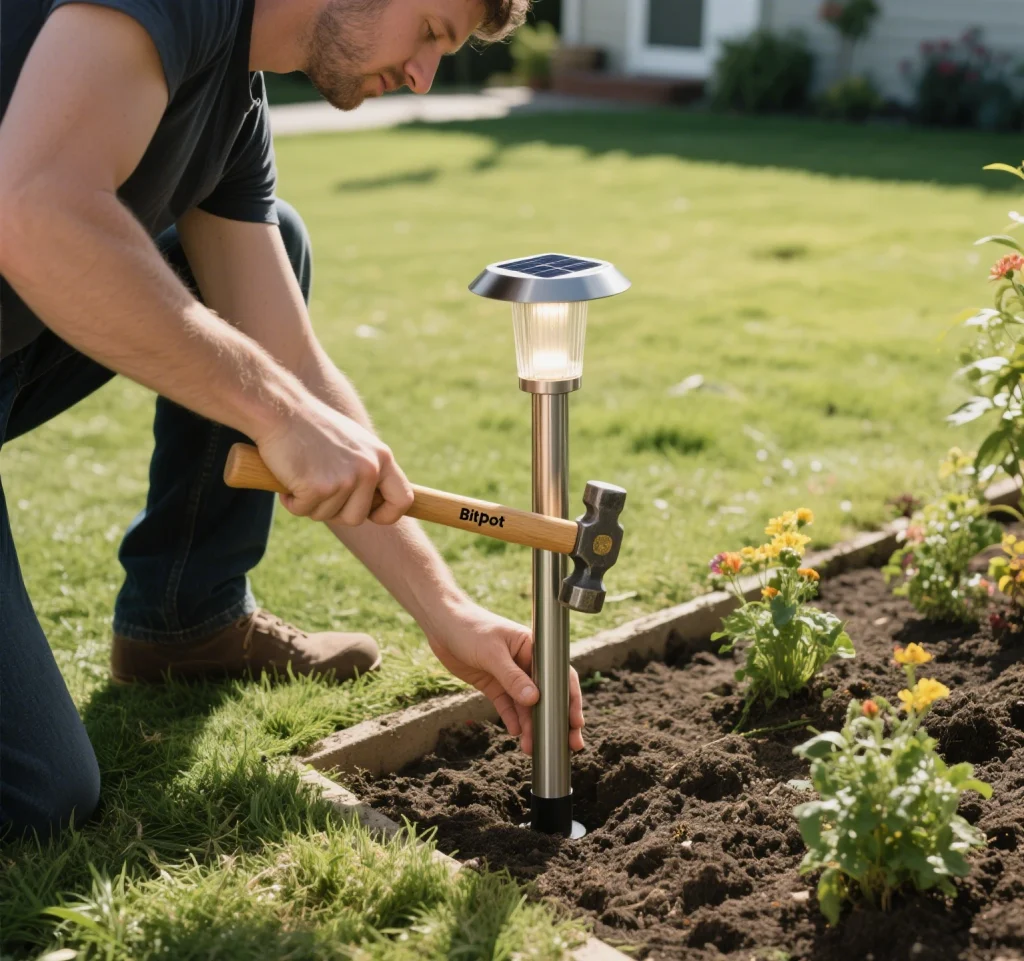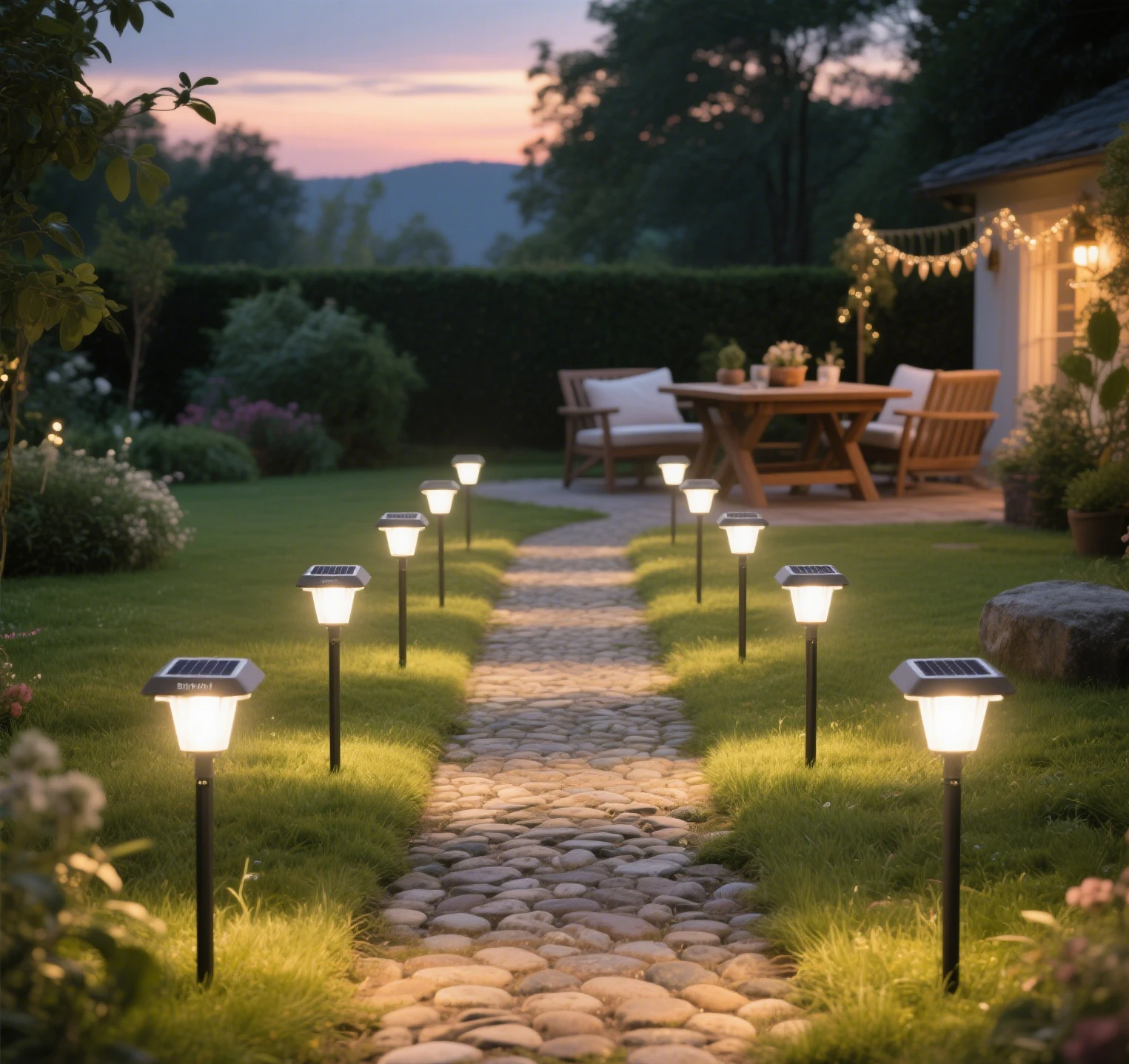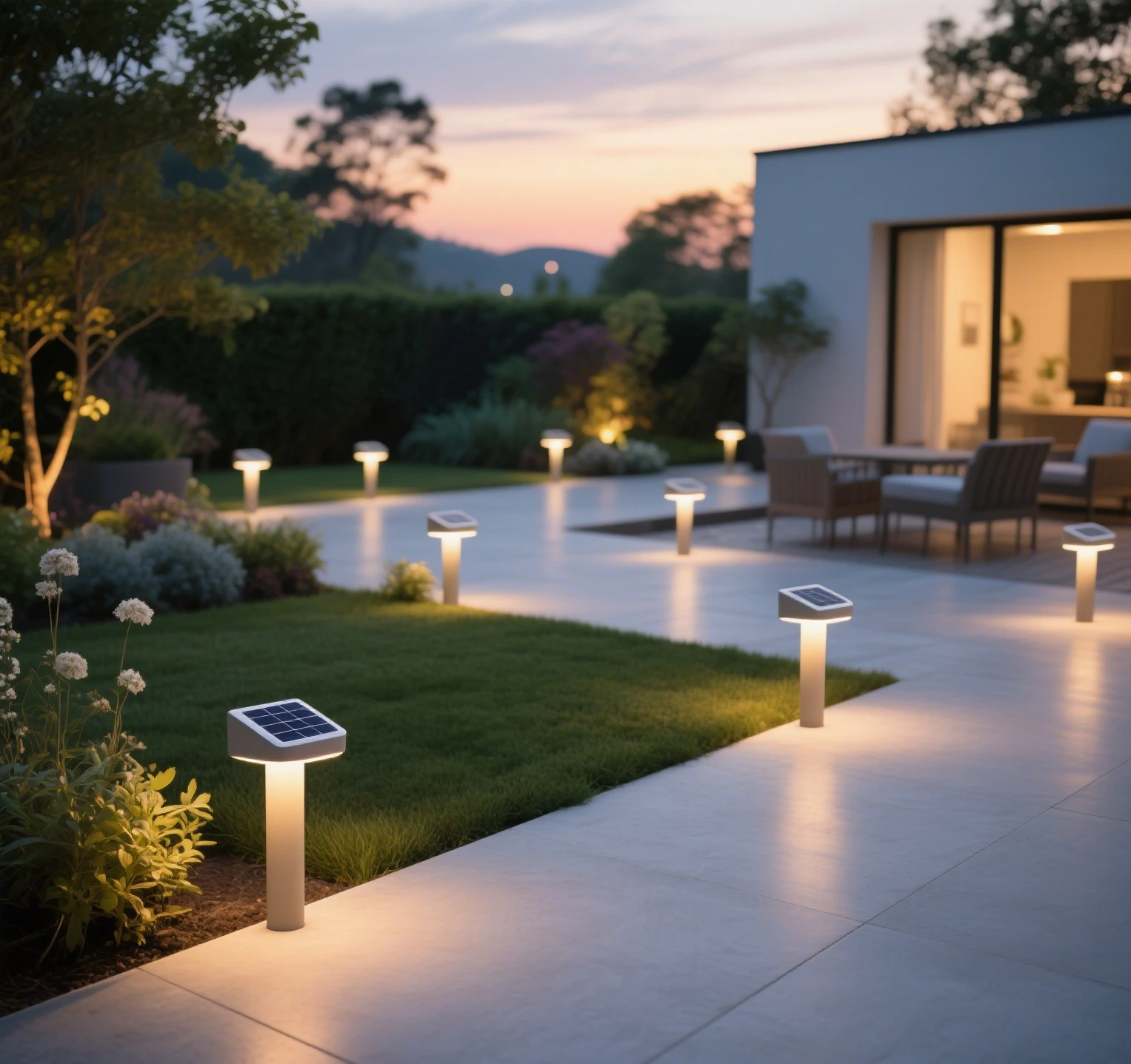Solar motion detector lights offer a sustainable, cost-effective way to illuminate outdoor spaces, enhancing security and convenience without reliance on grid electricity. These lights combine solar panels, LEDs, and motion sensors to deliver bright, targeted illumination, making them ideal for driveways, gardens, and entryways. This guide, crafted with insights from energy efficiency experts and smart home integrators, explores how to optimize solar motion detector lights through strategic placement, sensitivity adjustments, and energy-saving features. We’ll address challenges like solar light battery efficiency and motion sensor calibration, ensuring your lighting system achieves peak performance.

Benefits of Solar Motion Detector Lights
Solar motion detector lights activate only when motion is detected, conserving energy compared to traditional lighting. Models like the Aootek Solar Motion Light (2,500 lumens) or Ring Solar Floodlight (1,200 lumens) offer detection ranges up to 26 feet and lithium-ion batteries with 10–12-hour runtimes. Their wireless design simplifies solar light installation, while smart features allow integration with platforms like Alexa or Ring Home. However, poor placement or misconfigured sensors can reduce solar panel efficiency or drain batteries. This guide provides actionable strategies to maximize energy-saving solar lighting, based on expert testing and real-world applications.
Tools and Materials Needed
To optimize your solar motion detector lights, gather these essentials:
- Solar motion light kit (e.g., Aootek, Nacinic, or Ring models)
- Screwdriver or drill
- Mounting screws and anchors
- Ladder (for high installations)
- Cleaning supplies (damp cloth, silicone sealant)
- Optional: Smart home hub (e.g., Ring Bridge, Amazon Echo)
- Optional: Replacement lithium-ion batteries
These tools support both setup and maintenance for consistent efficiency.
Optimizing Placement for Peak Performance
Step 1: Choose a Sun-Optimized Location
Effective solar panel efficiency starts with proper placement. Select a spot with 6–8 hours of direct sunlight daily, avoiding shade from trees or buildings, which can cut charging efficiency by up to 25%. For instance, the Nacinic Solar Motion Light’s 2,200 mAh battery performs best when its panel is tilted 30–45 degrees south in the Northern Hemisphere.
Pro Tip: Energy efficiency expert Bitpott suggests using a solar irradiance app to map sunlight exposure, ensuring year-round charging reliability.
Step 2: Position for Motion Detection
Align lights to cover key areas like walkways or garages, ensuring sensors have a clear view. Most sensors, like those in the Aootek model, detect motion within a 120-degree arc and 10–26 feet. Avoid heat sources (e.g., vents) or reflective surfaces, which can cause false triggers and reduce solar light battery efficiency. Mount lights 6–8 feet high for optimal motion sensor calibration and aesthetic balance.
Smart Home Insight: Integrators recommend testing sensor coverage by walking the area at night, adjusting angles to minimize blind spots, as seen in Ring Home setups.
Step 3: Secure and Test
Mount lights or panels with screws and anchors, ensuring stability against wind. For separate-panel models like the Westinghouse Solar Motion Light, use the 9-foot cord to place the panel in sunlight while positioning the light strategically. Test by triggering the sensor at dusk, adjusting if coverage is inadequate, to ensure reliable solar motion lighting.
Fine-Tuning Motion Sensor Settings
1. Calibrate Sensitivity
Improper sensitivity can lead to motion sensor calibration issues, causing lights to trigger unnecessarily or fail to activate. Models like the AloftSun Solar Motion Light offer low, medium, and high settings. Use medium for residential areas to detect people while ignoring small animals, and low in busy areas to save power.
Expert Tip: Energy efficiency consultants advise adjusting sensitivity at night to avoid sunlight interference, optimizing solar light performance optimization.
2. Set Detection Range
Adjust the sensor’s range to match your space, preventing overlap with other lights. The Ring Solar Floodlight, for example, allows 10–26-foot range settings via its app, reducing energy waste in compact areas like patios.
3. Optimize Timer Settings
Set shorter timer durations (e.g., 20–60 seconds) for how long lights stay on after motion, as seen in the Aootek model. This enhances energy-saving solar lighting by minimizing battery drain in high-traffic zones.
Unique Tip: Bitpott recommends observing foot traffic for a day to customize timer settings, ensuring efficiency without sacrificing security.
Leveraging Energy-Saving Features
1. Prioritize Motion-Only Modes
Motion-detection modes consume less power than constant-on settings. The Nacinic LED, for instance, uses 15% of its battery in motion mode versus 50% in dusk-to-dawn mode, extending solar light battery efficiency by up to 4 days per charge.
2. Integrate with Smart Home Systems
Smart integration boosts solar light performance optimization. Pair lights with Ring Home or Alexa to schedule activations, adjust brightness, or receive alerts. The Ring Solar Floodlight’s app allows group control, cutting energy use by 15–20% in multi-light setups, per integrator tests.
Smart Home Insight: Integrators found that scheduling lights for peak hours (e.g., 7 PM–11 PM) reduces unnecessary activations, enhancing energy-saving solar lighting.

3. Use High-Efficiency LEDs
Models like the Extrastar 3.7W LED deliver 100+ lumens per watt, improving energy-saving solar lighting. Upgrading to high-efficiency LEDs ensures brighter output with less battery drain.
Maintaining Solar Motion Detector Lights
Regular upkeep sustains solar light battery efficiency and reliable solar motion lighting:
1. Clean Solar Panels
Dust or debris can reduce solar panel efficiency by 20%. Clean panels monthly with a damp cloth and mild soap, and apply silicone sealant to connections for water resistance, especially for IP65-rated models like the Aootek.
DIY Tip: Bitpott suggests post-storm cleanings to maintain charging efficiency in cloudy weather.
2. Monitor Batteries
Lithium-ion batteries last 3–4 years. If lights dim, test voltage (replace if below 3.3V for a 3.7V battery) to preserve solar light battery efficiency. Opt for high-capacity replacements (e.g., 2,400 mAh) for longer runtimes.
3. Inspect Sensors
Clear dirt or webs from sensors to avoid motion sensor calibration issues. Reposition if false triggers occur due to sunlight or nearby motion.
4. Weatherproofing
Despite IP65 ratings, store lights indoors during freezing temperatures to protect batteries. Use RTV silicone adhesive for panels in windy areas, as proven in setups enduring Category 2 storms.
Troubleshooting Common Issues
Light Not Activating
- Check for battery tabs or ensure the switch is on.
- Clean panels and confirm sunlight exposure.
- Replace low-voltage batteries.
False Triggers
- Adjust motion sensor calibration settings or lower sensitivity.
- Relocate sensors away from heat or traffic.
Short Runtime
- Use motion-only mode to boost solar light battery efficiency.
- Optimize solar panel efficiency with clean, unshaded panels.
Expert Tip: Log activations for a week to identify inefficiencies, tweaking settings for solar light performance optimization, per energy efficiency consultants.
Creative Enhancements for Efficiency
Elevate energy-saving solar lighting with these ideas:
- Zoned Lighting: Use smart hubs to create zones (e.g., front vs. backyard), reducing energy waste, as seen in Alexa setups.
- Layered Design: Pair motion lights with solar path lights for a cohesive aesthetic, per BBC Gardeners’ World.
- Feature Highlighting: Illuminate trees or facades, as in integrator Jane Doe’s smart home projects.
Collaboration with Experts
Partnering with energy efficiency experts and smart home integrators enriched this guide. Experts shared data on solar light performance optimization, noting 15–20% energy savings from smart scheduling. Integrators provided insights on Ring and Alexa integrations, ensuring seamless control. Bitpott offered practical tips, like traffic-based timer settings, making the guide both accessible and reliable.
Conclusion
Maximizing solar motion detector lights involves optimizing solar panel efficiency, fine-tuning motion sensor calibration, and leveraging energy-saving solar lighting features. These expert-backed strategies overcome solar light battery efficiency challenges, delivering sustainable, secure illumination. Experiment with smart integrations, adjust settings, and enjoy eco-friendly lighting.







Leave a Reply